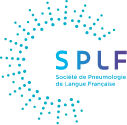Activité du conseil médical en environnement intérieur (CMEI) en Bourgogne : évaluation auprès des médecins et des patients - 22/11/13

Résumé |
Depuis décembre 2009, les pneumologues et allergologues bourguignons peuvent faire appel à un conseiller médical en environnement intérieur (CMEI). Les interventions, gratuites pour le patient, sont réalisées sur recommandation médicale après tests cutanés systématiques.
Objectifs |
Décrire les indications et la répartition des prescriptions et mesurer l’impact de la visite à six mois sur les 100 premiers patients et à 18 mois auprès des médecins.
Méthode |
Entretien téléphonique des 67 médecins (prescripteurs ou non) sur leurs motivations et/ou leurs attentes et des 100 premiers patients sur le suivi des recommandations.
Résultats |
Soixante-dix pour cent des médecins ont répondu (n=47). La satisfaction des prescripteurs (22) était de 8,42/10. Les indications étaient la rhinite et l’asthme mal contrôlé. Les demandes concernaient la recherche d’acariens (50 %) et de moisissures (46 %). Quatre-vingt-quatre pour cent des médecins analysaient le rapport du CMEI avec les patients. Les symptômes des patients étaient la rhinite (79 %), l’asthme (57 %) et la conjonctivite (33 %). Les Acarex test® réalisés en cas de test cutané positif aux acariens (n=72) étaient à un niveau élevé chez 67 patients. Seize prélèvements de moisissures sur 21 dépassaient les taux standards. Soixante-neuf patients ont suivi les recommandations.
Conclusion |
L’impact des visites des CMEI est perçu comme positif par les médecins et les patients. L’impact médicoéconomique devra être évalué.
El texto completo de este artículo está disponible en PDF.Summary |
Since December 2009, chest physicians and allergologists in Burgundy have been able to call upon a medical indoor environment counsellor (MIEC). The consultations are free for the patient and are undertaken following a medical referal after systematic cutaneous prick tests.
Aims |
To describe the indications, the distribution of prescriptions and to measure the impact of the counsellor's visits on the first 100 patients at 6 months and on the physicians at 18 months.
Method |
Telephone interviews with the 67 physicians (whether prescribers or not) concerning their motivation and/or expectations, and with the first 100 patients concerning follow up of the recommendations.
Results |
Seventy percent of the physicians replied (n=47). The satisfaction of prescribers (n=22) was 8.42/10. The indications were rhinitis and a poorly controlled asthma. The requests concerned the search for dust mite (50%) and moulds (46%). Eighty-four percent of the physicians discussed the MIEC's report with the patients. The patients’ symptoms were rhinitis (79%), asthma (57%) and conjunctivitis (33%). The Acarex test®, performed in cases of positive prick tests to house dust mites (n=72), was strongly positive for 67 patients. Sixteen mould samples out of 21 were above the standard concentrations. Sixty-nine patients had followed the recommendations of the MIEC.
Conclusion |
The impact of the MIEC visits was perceived as positive by the physicians and the patients. The medico-economic impact warrants further evaluation.
El texto completo de este artículo está disponible en PDF.Mots clés : Conseiller médical en environnement intérieur, Allergène, Éviction, Asthme, Acariens, Environnement intérieur
Keywords : Medical interior environment counsellor, Allergen, Eradication, Asthma, House dust mites, Indoor environment



